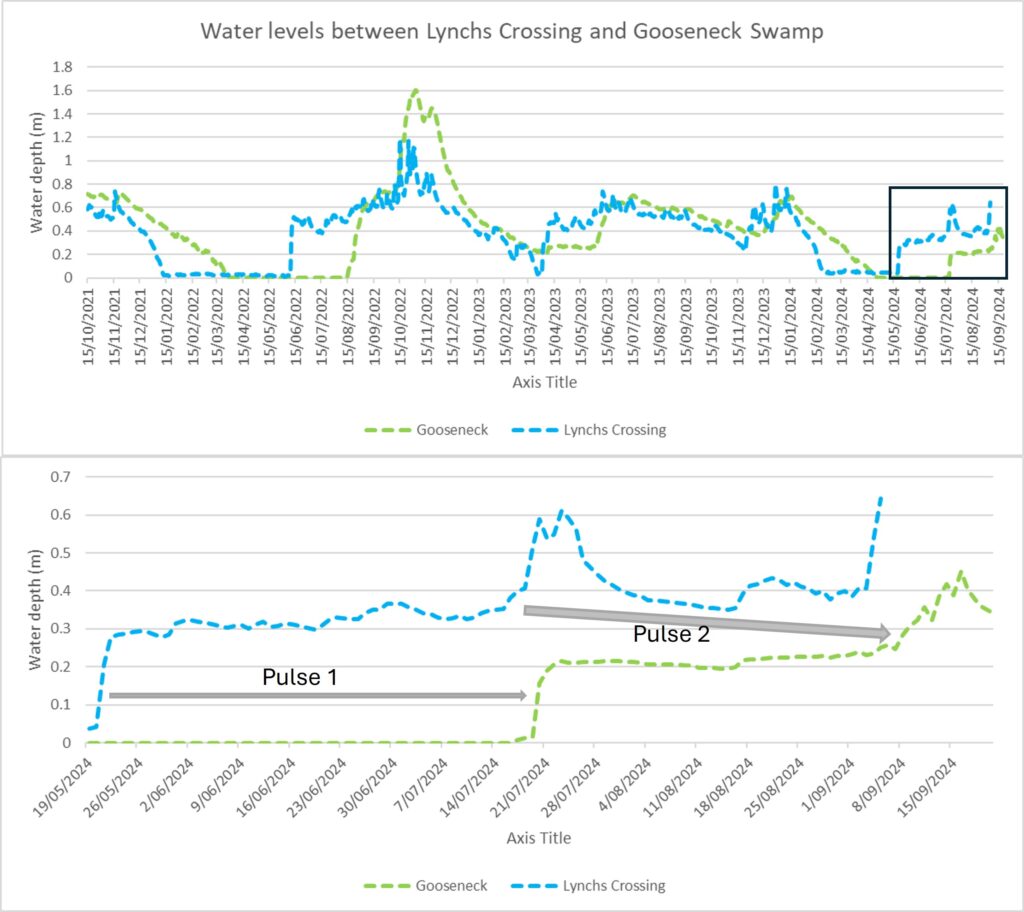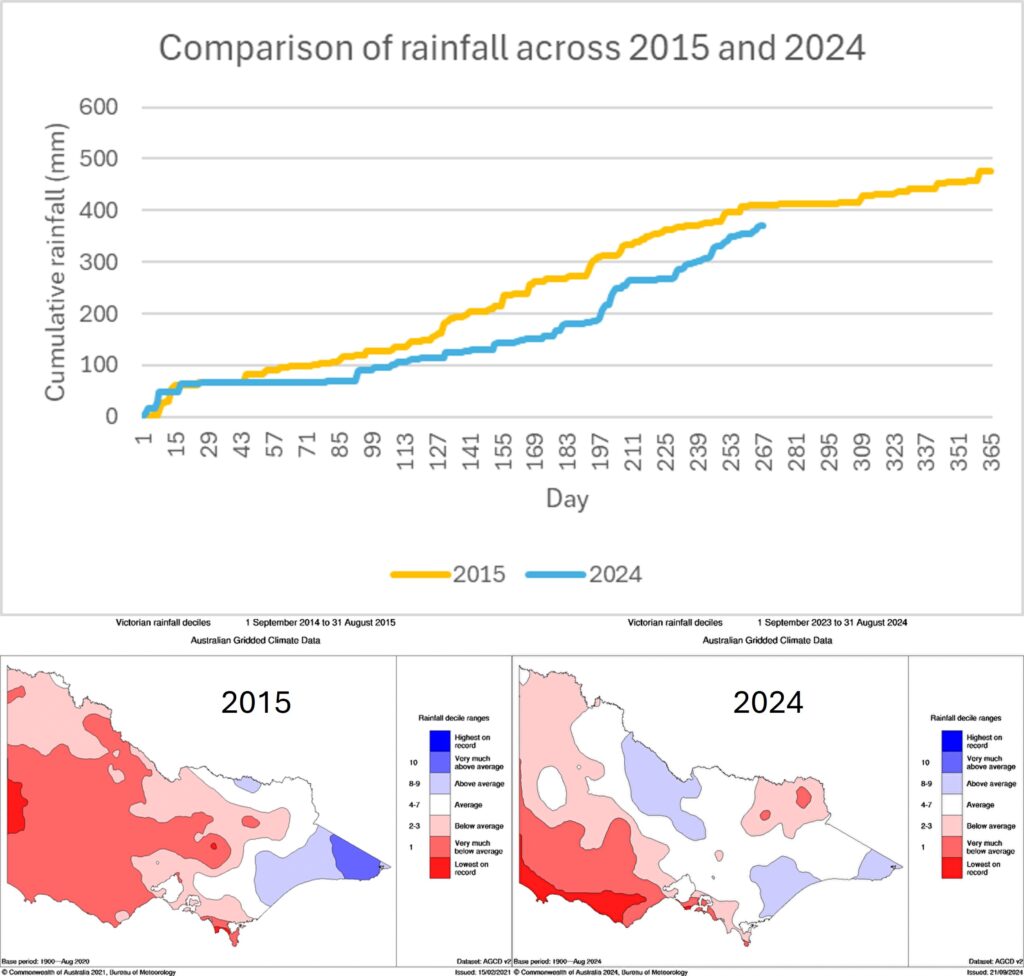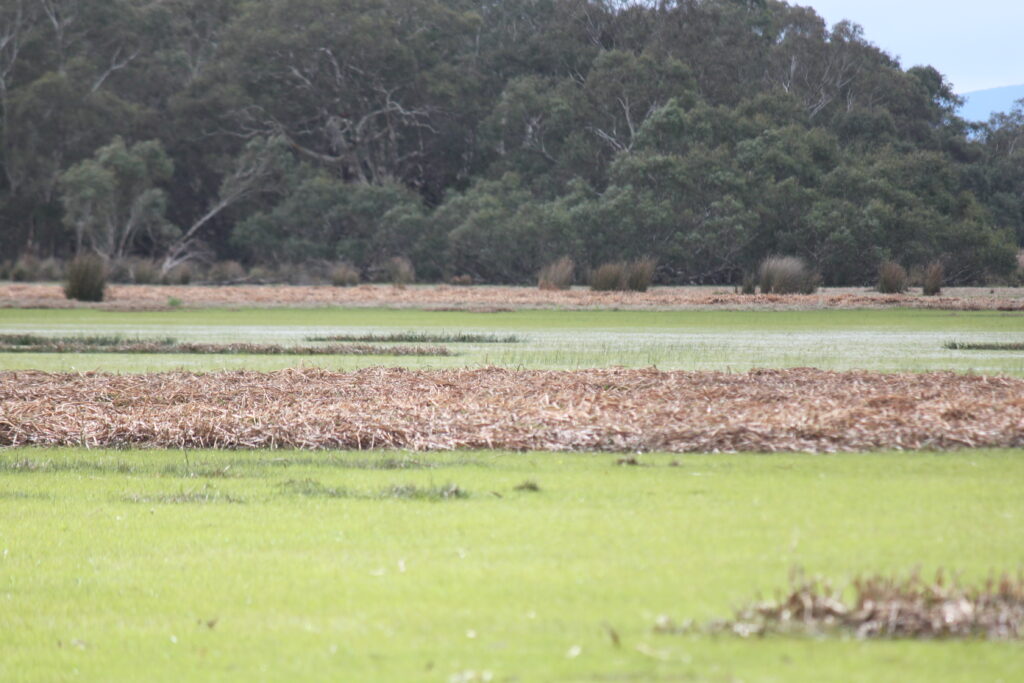Wannon River Insights Part 5: A legacy of the wet as we return to the dry
Earlier this year, I wrote an article on how long it takes water to flow through the upper Wannon River, drawing on comparisons from the 1980s and more recently in 2022.
The Wannon River catchment begins in the Grampians National Park and influences important wetlands like Brady Swamp, Gooseneck Swamp and NGT’s Walker Swamp Restoration Reserve along the way.
Across 2022 and 2023 we had a prolonged period of above average rainfall and sustained flows through the upper Wannon River. The Wannon was flowing at Lynchs Crossing from June 2022 right through until February this year (2024), and Gooseneck Swamp stayed wet from August 2022 through until around March this year. This resulted in a magnificent flush of wetland plant growth, as captured by Mark earlier this year.

Through 2024, we have seen one of the driest winters on record, particularly in southwest Victoria. However, the Wannon commenced flowing in May and that water has now finally made its way down to Gooseneck and Brady Swamps. I wandered in to Gooseneck last week and observed these flows beginning to make their way in. True to form, these flows had arrived 10 weeks after the first pulses through Lynchs Crossing, an estimate we have derived from our study into the ecology and hydrology of the Wannon River, funded through the Australian Government’s Australian Hertiage Grants Program 2020-21.
From the video below, you can see these are very subtle flows but they do indicate that the floodplain is saturated and conveying any additional flows which make their way through, before evaporation begins to take over, as we move toward longer and warmer days. There is another pulse which passed through Lynchs Crossing a couple of weeks ago (see the blue dotted in line in the chart above) and this should arrive mid-November, providing a much needed top up just in time to support fish and frog breeding as we head into the late spring and early summer.
The relationship between rainfall and flows this year really tells a story of the legacy a wet year (or years) can have.
In 2015, we experienced one of the drier years on record and the first time some locals could recall the wetlands of the Wannon (Gooseneck and Brady Swamps) not receiving water from the river. If we compare the rainfall across the catchment, it is remarkably similar although this year has been arguably drier. However, we are now seeing Gooseneck Swamp starting to fill whereas in 2015 it remained dry, and we didn’t actually see any inflows until winter 2016. So there is obviously some subsurface water which has been maintained, as a carryover effect from the recent wetter years. Hopefully the flows making their way through will be sufficient to maintain floodplain saturation, so these wetlands can truly capitalise on any more flows which occur in the lead up to summer.
.


This project was supported by the Australian Government’s Australian Heritage Grants Program 2020-21.
